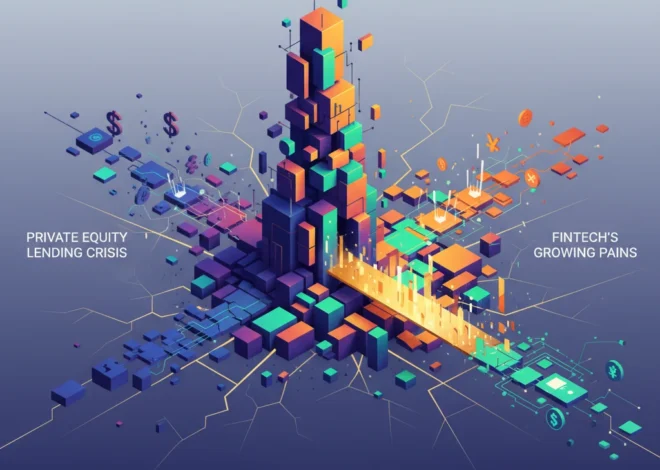
From Ivory Tower to Global Economy: The Hidden Influence of Academic Research on Your Finances
Have you ever wondered where the rules that govern our financial world come from? The interest rate decisions that affect your mortgage, the banking regulations that protect your savings, or the corporate governance standards that influence the stock market—these don’t materialize out of thin air. They are often the end product of a long, complex journey that begins in a surprisingly quiet place: the pages of an academic journal.
For decades, the impact of a business school research paper was measured by a simple, insular metric: how many other academics cited it. This created an “ivory tower” effect, where brilliant ideas could circulate endlessly within academia but their real-world influence remained a matter of speculation. But what if we could track these ideas as they leap from the university library into the halls of power? A groundbreaking new approach is doing just that, revealing a powerful and often invisible feedback loop between scholarly research and the economic policies that shape our lives.
By analyzing citations not in other journals, but in documents published by governments, central banks, and global think tanks, we can now map the path from theory to practice. This new lens shows that the research coming out of top business schools is not just an intellectual exercise; it’s the foundational blueprint for the future of finance, investing, and the global economy.
Redefining “Impact”: Moving Beyond Academic Applause
The traditional measure of academic success has long been peer recognition. A paper was considered influential if it was frequently cited by other researchers. While important for advancing theoretical knowledge, this metric tells us very little about whether a paper has had any tangible effect on business practices or public policy. It’s like measuring a chef’s skill only by how many other chefs praise their recipe, without ever knowing if anyone actually cooked or enjoyed the meal.
This is now changing, thanks to new methods of data analysis. A recent investigation, leveraging data from the policy search engine Overton, analyzed millions of policy documents to see which academic papers were being cited by policymakers. The results are illuminating. Research from world-renowned institutions like Harvard Business School, Stanford’s Graduate School of Business, and the Wharton School at the University of Pennsylvania are consistently referenced in reports from organizations like the World Bank, the International Monetary Fund, and national governments.
This shift in measurement is partly driven by initiatives like the UK’s Research Excellence Framework (REF), which assesses the quality of research from UK universities and explicitly includes “impact” beyond academia as a key criterion for funding. This has incentivized universities to not only produce high-quality research but also to ensure it is accessible, relevant, and applicable to the pressing issues of the day, from climate change and sustainability to the stability of the banking system.
High Stakes in Asia: Decoding the Trump-Xi Summit and Its Impact on the Global Economy
The Transmission Belt: How an Idea Shapes the Economy
The journey of an academic idea into public policy is rarely a short one. The analysis reveals a significant time lag, often five years or more, between a paper’s publication and its appearance in a policy document. This “incubation period” allows an idea to be debated, refined, and tested by the academic community before it’s ready for real-world application.
Think of it as a slow-release mechanism for the economy. A paper published today on the systemic risks of high-frequency trading might first be discussed at academic conferences. It could then be incorporated into graduate-level economics courses. A few years later, a regulator at the Securities and Exchange Commission (SEC) who studied that work might reference it in an internal memo about stock market stability. Finally, it appears as a formal citation in a proposed rule change, directly impacting the rules of trading and investing.
This process is happening constantly across all sectors of the economy. Below is a look at how this transmission belt works in practice, connecting specific research areas to tangible outcomes in finance and economics.
| Research Area | Citing Policy Body (Example) | Potential Real-World Impact |
|---|---|---|
| Corporate Governance & Executive Compensation | U.S. Securities and Exchange Commission (SEC) | New disclosure rules for publicly traded companies, influencing executive pay structures and shareholder rights. Affects stock market valuations. |
| Systemic Risk in Banking | Bank for International Settlements (BIS) / Federal Reserve | Stricter capital adequacy requirements for major banks (e.g., Basel III), designed to prevent financial crises and stabilize the global banking sector. |
| Behavioral Economics & Investor Protection | Consumer Financial Protection Bureau (CFPB) | Regulations on how financial products are marketed to consumers, aiming to mitigate irrational biases in investing and borrowing decisions. |
| Financial Technology (Fintech) & Innovation | UK’s Financial Conduct Authority (FCA) / Treasury Departments | Creation of “regulatory sandboxes” that allow fintech and blockchain startups to test new products, shaping the future of financial technology. |
| Climate Finance & ESG Investing | European Central Bank (ECB) / UN Principles for Responsible Investment | Development of green taxonomies and climate stress tests for banks and investment funds, channeling capital towards sustainable projects. |
As the table illustrates, the intellectual supply chain is long but direct. The theories that govern modern finance—from the Efficient Market Hypothesis that underpins index fund investing to the Modigliani-Miller theorem on capital structure—all began as academic papers before they became the bedrock of financial practice.
What This Means for You: The Investor, Leader, and Professional
Understanding this connection between academia and policy isn’t just an intellectual curiosity; it provides a strategic advantage. By paying attention to the currents of influential academic thought, you can better anticipate the future of markets, regulations, and business strategy.
For Investors: The research being cited today is a leading indicator of the regulatory environment of tomorrow. If a critical mass of papers on carbon pricing and stranded assets are being cited by central banks, it signals a major future risk for traditional energy stocks. Conversely, research on the efficiency of decentralized finance (DeFi) could foreshadow a more favorable regulatory stance toward certain blockchain applications. Paying attention to these trends can inform a more forward-looking and resilient investing strategy.
The Green Steel Shockwave: Is Australia's 0bn Iron Ore Empire Facing a 'Freight Train' of Change?
For Business Leaders: Are you prepared for the next wave of corporate responsibility standards? Are you aware of the emerging economic models that could disrupt your supply chain? The answers are likely being debated in business school common rooms and research seminars right now. By following the work of leading academics in your field, you can anticipate policy shifts and proactively adapt your business model, rather than reactively complying with new regulations.
For Finance Professionals: The tools of your trade—from risk management models to asset valuation techniques—are in a constant state of evolution, driven by academic innovation. The next breakthrough in quantitative trading, credit risk analysis, or financial technology is almost certainly being built upon a foundation of peer-reviewed research. Staying abreast of this intellectual frontier is essential for maintaining a competitive edge and driving innovation within your own organization.
The Invisible Architecture of Our Financial World
The ability to systematically track the influence of academic research on policy is more than just a new ranking system for universities. It pulls back the curtain on the invisible architecture of our economic and financial systems, revealing how abstract ideas are forged into concrete rules that impact trillions of dollars in capital and the lives of billions of people.
This newfound transparency creates a more accountable and potentially more effective system. Policymakers can be guided by the most rigorous and relevant evidence, while academics are incentivized to tackle the most pressing real-world challenges.
As we move forward, the line between the “ivory tower” and the “real world” will continue to blur. By understanding and engaging with this vital connection, we can all become more informed participants in the ongoing project of building a more stable, innovative, and prosperous global economy.


